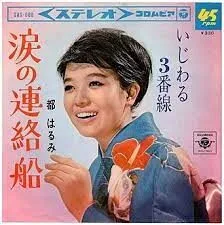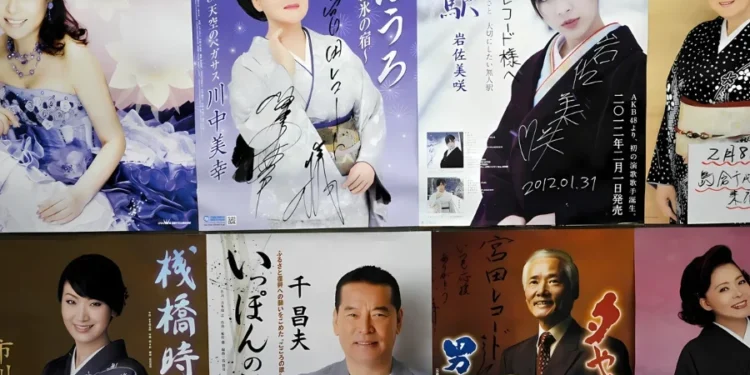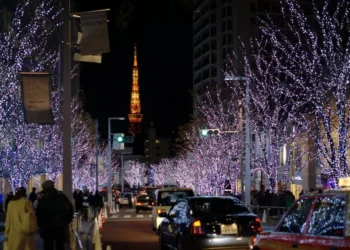No products in the cart.
From National Melody To Niche Tradition: How Enka Lost Its Hold On Japanese Music
The Origins Of Enka As A Cultural Force
Enka is often thought of as the sound of nostalgia in Japan, with its slow tempos, melodramatic vibrato, and sentimental lyrics about love, loss, and perseverance. Its roots go back to the Meiji period in the late 19th century, when political activists used a form of spoken-song performance to express political dissent. Over time, the style transformed into a musical genre closer to ballads, incorporating Japanese pentatonic scales and traditional instruments alongside Western orchestration.
By the mid-20th century, enka had become a central pillar of the Japanese music industry. It was the soundtrack to postwar recovery, resonating with older generations who valued its themes of endurance and emotional sincerity. Singers like Hibari Misora and later Saburō Kitajima became household names, with television programs and radio broadcasts cementing its role as Japan’s defining popular music.
Enka’s Postwar Dominance
In the 1950s and 1960s, it was more than just a genre—it was the mainstream. Record labels invested heavily in artists, and their songs often reflected the collective mood of the nation. The lyrics focused on themes familiar to Japanese listeners: longing for home, heartbreak, and the struggles of life. Many of these songs used the traditional pentatonic scale, which gave them a distinctly Japanese sound even when accompanied by Western-style arrangements.
During this period, its dominance meant that it was nearly unavoidable in the cultural landscape. Television variety shows often featured singers, and annual events like NHK’s Kōhaku Uta Gassen prominently showcased the genre. For several decades, it represented not only popular taste but also cultural identity.

The Rise Of New Sounds In The 1960s
The late 1960s marked the first major challenge to its supremacy. Japanese youth, increasingly exposed to Western music through radio, television, and imported records, began gravitating toward new styles. The “Group Sounds” movement, heavily influenced by The Beatles and The Rolling Stones, saw bands like The Tigers, The Spiders, and The Tempters gain popularity with electric guitar-driven pop rock.
At the same time, the emergence of kayōkyoku—a broader category of Japanese popular music that included softer pop, folk, and idol music—began to attract younger listeners. These styles still retained some Japanese musical sensibilities but incorporated Western harmonies, rhythms, and production techniques that made them feel fresher and more modern.
The Folk And Idol Boom Of The 1970s
By the early 1970s, it was no longer the only major music genre in Japan. Folk musicians like Takuro Yoshida, Yosui Inoue, and Iruka gained national attention with more personal and contemporary lyrics, often addressing social change and urban life. Meanwhile, the idol phenomenon began to take shape, with young pop stars like Momoe Yamaguchi and Pink Lady appealing to teenage audiences.
Television variety shows shifted their focus toward these emerging stars, leaving less airtime for singers. While established artists maintained loyal fanbases, the youth market—crucial for driving mainstream popularity—was increasingly captured by pop, folk, and rock.
The 1980s And The City Pop Revolution
The 1980s brought city pop, a sophisticated blend of pop, funk, jazz, and disco that reflected Japan’s booming economy and cosmopolitan culture. Artists like Tatsuro Yamashita, Mariya Takeuchi, and Anri created a soundtrack for urban living that appealed to the younger middle class. It, by contrast, was seen as old-fashioned and rural, a musical link to the past rather than a symbol of progress.
Record labels recognized this shift and began directing more resources toward genres that appealed to the younger, urban demographic. This further pushed it into a niche market. Still, dedicated fans remained, and artists such as Sayuri Ishikawa and Hiroshi Itsuki continued to release successful albums within their genre.
Enka In The 1990s And 2000s
By the 1990s, J-pop had solidified its position as the dominant force in Japanese music. Groups like SMAP, Namie Amuro, and Hikaru Utada brought in massive sales numbers, appealing to both domestic and overseas audiences. It maintained a presence through specialized radio programs, concerts, and the older demographic’s continued support, but it was largely absent from the youth-driven mainstream charts.
Occasionally, crossover artists emerged who could bridge the gap. For example, Jero, an African-American singer fluent in Japanese, made headlines in 2008 for becoming the first singer of non-Japanese descent to achieve major success in Japan. His image—a blend of hip-hop fashion and traditional singing—sparked renewed interest in the genre among younger audiences, though the effect was temporary.
Its decline as the dominant genre in Japan was not due to a sudden fall from grace but rather a gradual shift in cultural taste and generational identity. The themes of it—nostalgia for the countryside, stoic perseverance, unrequited love—resonated deeply with the postwar generation, but younger Japanese audiences sought music that reflected their own realities, which were often urban, globalized, and fast-changing.
Enka’s decline as the dominant genre in Japan was not due to a sudden fall from grace but rather a gradual shift in cultural taste and generational identity. The themes of enka—nostalgia for the countryside, stoic perseverance, unrequited love—resonated deeply with the postwar generation, but younger Japanese audiences sought music that reflected their own realities, which were often urban, globalized, and fast-changing.
Another factor was the diversification of Japan’s entertainment industry. With the arrival of international music, domestic pop idols, and new media platforms, Japanese audiences had more choices than ever. Its traditional style simply did not compete in the same way with the bright, dynamic performances of pop acts or the relatable storytelling of folk singers.
Enka’s Role In Modern Japan
Today, it continues to thrive within its dedicated niche. Many rural festivals feature live performances, and television programs still celebrate the genre, particularly during New Year’s broadcasts. Karaoke bars across Japan keep classics alive, and some young singers still choose to pursue careers in the genre out of respect for its cultural significance.
Interestingly, a small revival of interest in enka has occurred in recent years, partly fueled by nostalgia and partly by curiosity from younger audiences exploring Japan’s musical heritage. However, it is unlikely that enka will ever reclaim its former status as the dominant music style in Japan. Instead, it occupies a respected place in the nation’s cultural tapestry, serving as a reminder of the values and emotions that shaped postwar Japanese society.
Interestingly, a small revival of interest has occurred in recent years, partly fueled by nostalgia and partly by curiosity from younger audiences exploring Japan’s musical heritage. However, it is unlikely that it will ever reclaim its former status as the dominant music style in Japan. Instead, it occupies a respected place in the nation’s cultural tapestry, serving as a reminder of the values and emotions that shaped postwar Japanese society.
Its journey from political street performance to mainstream ballad style and finally to cultural niche reflects broader shifts in Japanese society. From the postwar era through the economic boom and into the digital age, the Japanese music industry has evolved rapidly, with each generation leaving its mark on the nation’s soundscape. While it may no longer dominate the airwaves, its enduring presence proves its deep cultural roots. The story of enka is ultimately one of adaptation, tradition, and the ever-changing nature of popular taste in Japan.










